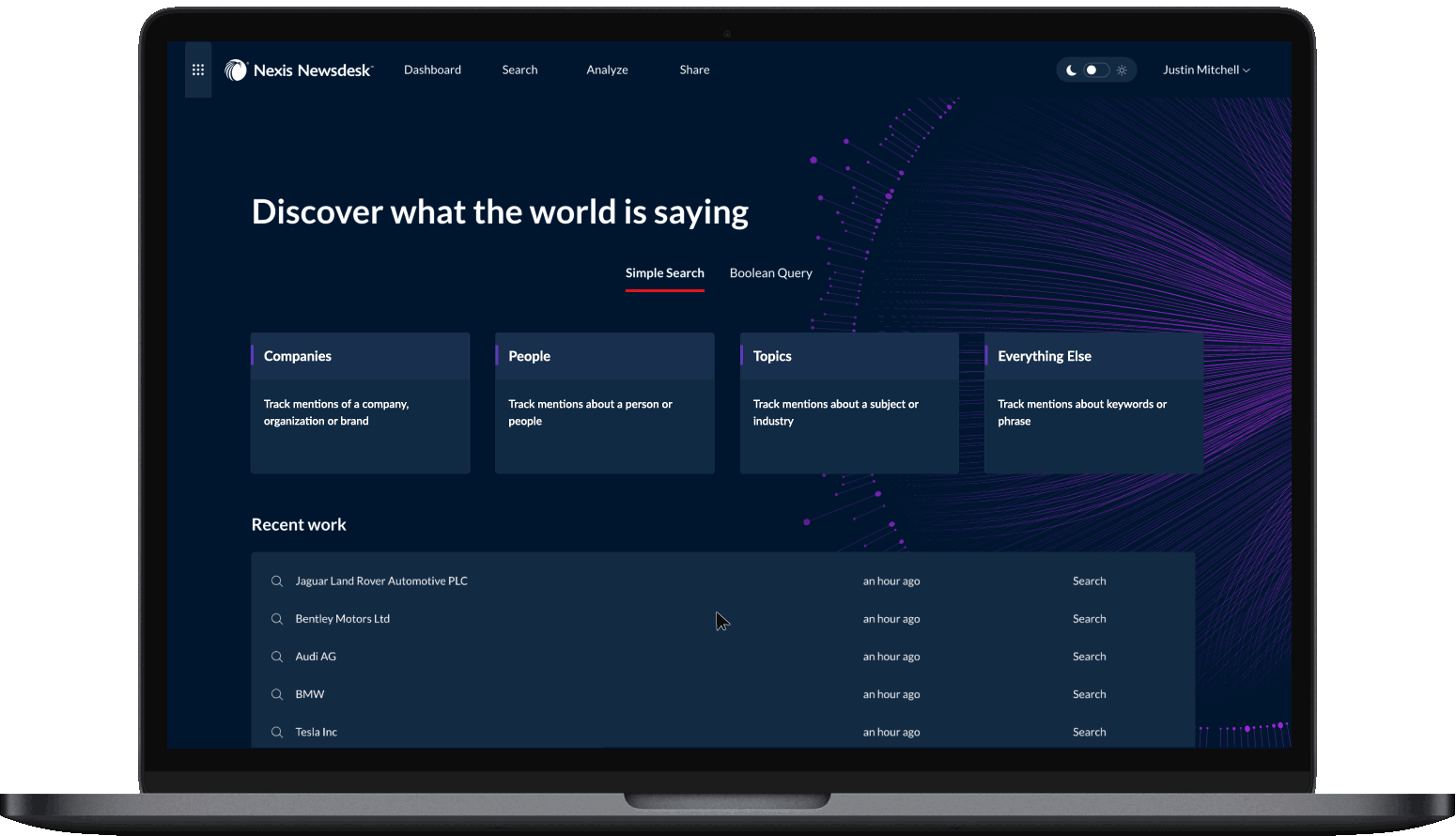Nexis Newsdesk offers access to over 100,000 print and online news sources, including premium licensed publications like The New York Times, along with millions of social media feeds—including direct integration with Twitter/X—plus blogs, web comments, forums, TV and radio broadcasts, and more. You can also integrate custom RSS feeds or manually upload articles to tailor the content to your needs.
To ensure relevance, the platform includes over 50 pre- and post-search filters—helping you refine results by source type, subject, geography, audience reach, and more. This allows you to zero in on the media coverage that matters most to your organization and research.
